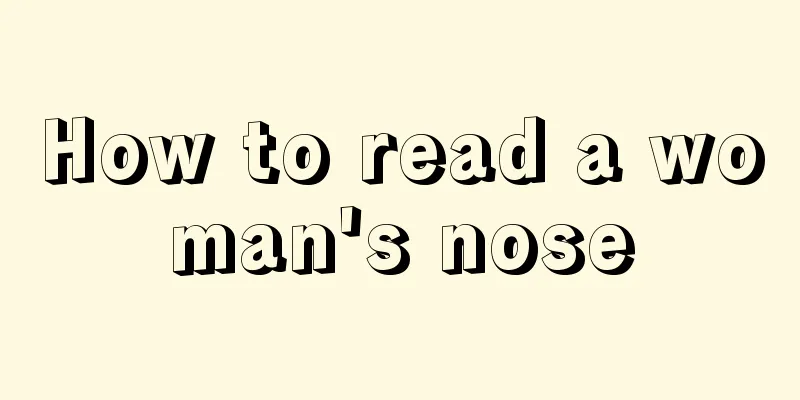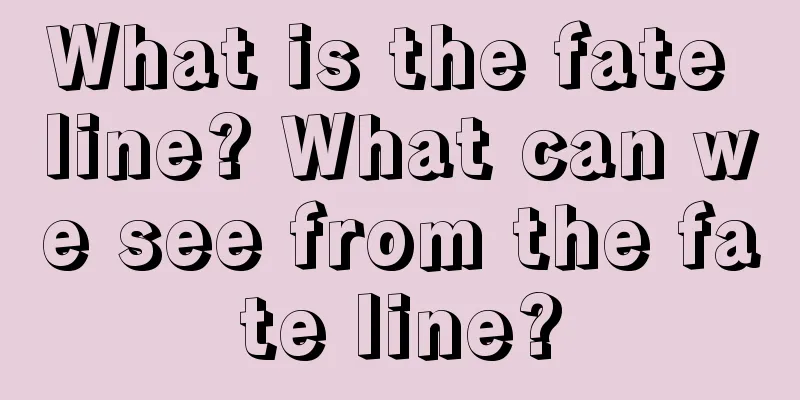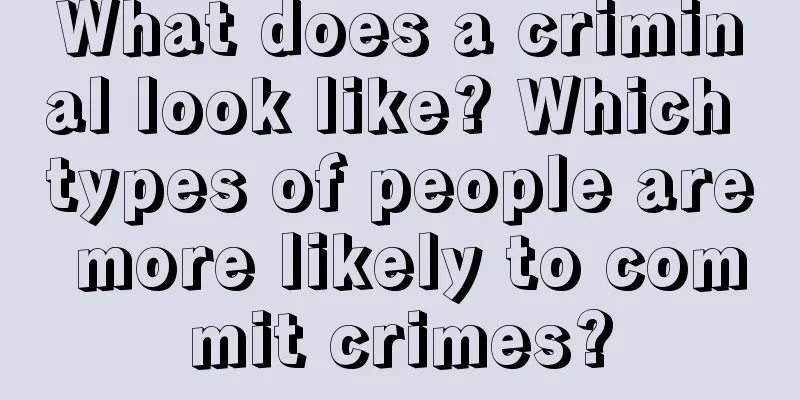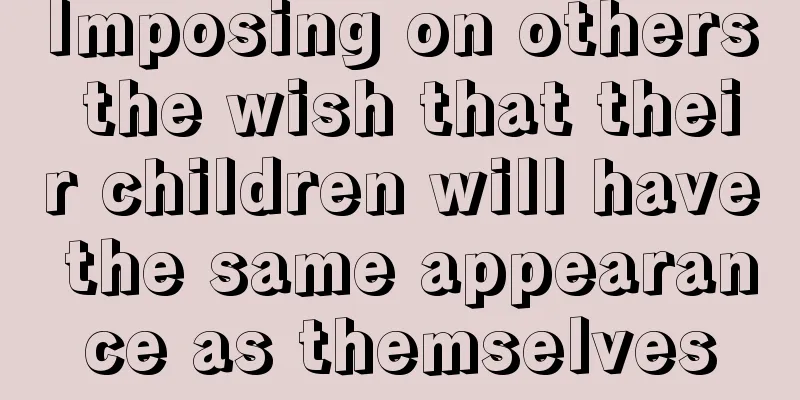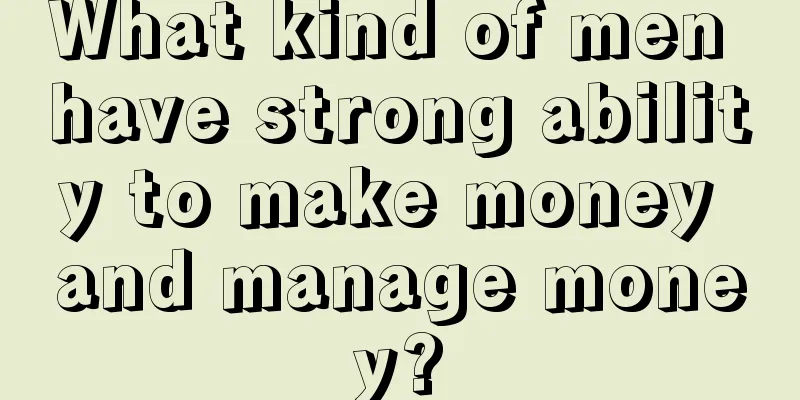How to learn to read faces
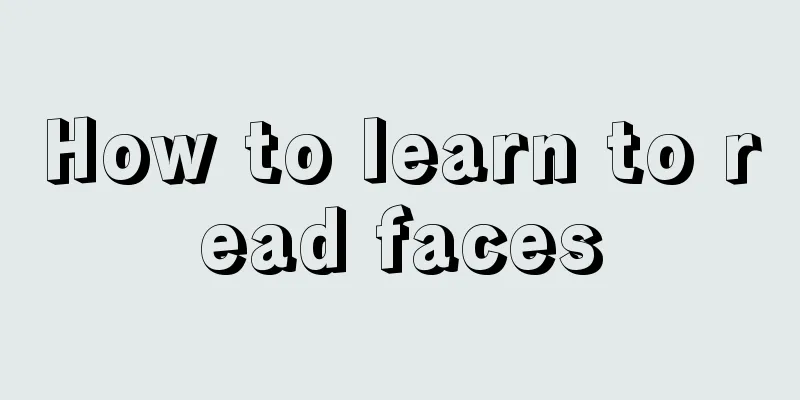
|
The so-called "physiognomy" is a science of fortune-telling by looking at a person's "facial features". So, how do you learn how to read faces? How to learn to read faces? Below is an article about how to learn to read faces. Let’s take a look! How to learn to read faces How to learn how to read faces How to read face, learn the overview of face reading To study physiognomy, one must first understand the principles of the Five Elements, because the Five Elements are reflected everywhere in the advanced theory of physiognomy, especially the Five Elements personality. To read a person's face, one must master three aspects of knowledge: the first is the five senses and destiny; the second is the three parts of the face and life; the third is the twelve palaces of the face and changes in life. These are the three essential courses for learning physiognomy. First, learn physiognomy by looking at the five senses People often say that person's "facial features" are like this and like that...; that person's "facial features" are like that and like that..., however, everyone may not be very clear about what the five features are. In fact, the five features are something in physiognomy. The five senses refer to the five organs of the human body, namely ears, eyebrows, eyes, nose and mouth. And in physiognomy, they are given a noun as follows: 1. Ear: It is called the "organ of hearing". The kidney opens up to the ear and is responsible for my memory, calmness, and ability to save money. 2. Eyebrows: called "longevity officer". Eyebrows represent the palace of love, which is responsible for our destiny’s friendship, love, brothers, colleagues, friends, romance, investment, cooperation, temper, etc. 3. Eyes: called 'Inspector'. It represents our good and evil, wisdom, intelligence, the light and darkness of our nature, dedication and greed, etc. 4. Nose: It is called the "organ of judgment". The nose represents the house of wealth, which is related to our destiny of wealth acquisition, material life, discernment, ego, self, and marital development. 5. Kouzui: Known as the 'cashier'. The shape of the mouth represents material desires, enjoyment, marital relationship, emotions, materials and feelings in our lives. Through the analysis of the five senses, we can make some basic physiognomy analysis of a person and further determine the fortune of a person. Eyebrows are usually related to health, status, interpersonal relationships, emotional investment with lovers, business investment and financial ups and downs. All of these can be determined by looking at a person's eyebrows. Eyes are related to a person's willpower and kindness. For example, people with big eyes are naive all their lives, while people with small eyes are quite shrewd and clever. The nose is related to a person's wealth and health; the length of the nose is related to longevity, the thickness of the nose is closely related to wealth in life, and the change in color of the nose represents the current fortune. The mouth is related to a person's happiness, food and noble fortune; the ears are related to a person's longevity. The higher the ears are, the more sufficient the kidney qi is; the thinner the ears are, the weaker the kidney qi is. People with big ears have a high happiness index, and people without lips have insatiable desires. Second, learn to look at the three stops in face reading In addition to the aforementioned 'five senses', there is also the so-called 'three stops' in physiognomy. As shown in the figure below 1. Upper part of the forehead: The area from the hairline on the forehead to the eyebrows is called the "upper part of the forehead". Responsible for the fortune of young people, in charge of the fortune between the ages of 15 and 30. The upper court is in charge of our destiny and wisdom, and is called the Palace of Officialdom. 2. Middle stop: The area from the eyebrows to the tip of the nose is called the "middle stop". Responsible for middle-aged fortune, controlling the fortune between the ages of 31 and 50. The atrium represents our personality orientation, outlook on life and values, self and collaboration, and all aspects of life. 3. Lower part of the face: The area from the bottom of the nose to the chin is called the "lower part of the face". Responsible for fortune in old age, in charge of fortune after the age of 51. The lower part of the face includes the chin, cheekbones and chin. It represents material living conditions, material desires and family, enjoyment and feelings, tolerance, etc. Basically, if the upper part of the face is high, long, plump, square and broad, it means the person has a high social status. Your fortune in life is relatively smooth, and you have a correct outlook on life, a bright and selfless heart, help from noble people, and know how to sympathize with others. If the middle part of the face is high and fleshy, it indicates wealth and longevity. If the lower part of the face is round, straight and thick, one will be blessed throughout his life. In addition, the ear area controls the fortune of teenagers under the age of 15, so good ears will help their fortunes as teenagers. If the nose bridge is straight and the nose tip is fleshy, the fortune will be better in life. If the cheekbones are flat, the career will be better. How to read face, learn face overview Third, learn to see the twelve zodiac signs In addition to the 'five senses' and 'three stops' mentioned above, there is another very important analysis, that is the 'twelve palaces of facial features'. As shown below How to read face, learn face overview 1. Life Palace: Located at the "Yintang" area between the eyebrows. Affects a person's basic fortune. The Palace of Life is related to noble people and courage, and is also related to the breadth of power and character. 2. Palace of Wealth: located at the tip of the nose. It is related to the fortune. In addition to representing the treasury, the nose also represents a person's tolerance and attitude towards money. 3. Palace of Brothers: Eyebrows are the Palace of Brothers. The good or bad relationships between brothers. The thickness of eyebrows is related to temperament, the length of eyebrows is related to attitude towards life, and the thickness of eyebrows directly affects marital feelings. 4. Marriage Palace: located at the end of the eye. The good or bad relationship between husband and wife. As the name suggests, the Marriage Palace represents married life. If there are evil moles or it is sunken, the marriage will not be happy. 5. Children's Palace: located in the raised area of the lower eyelid. It symbolizes whether the children have a promising future and whether they have offspring. The Palace of Children represents fertility and the number of children. If it is sunken and has net patterns, it means that the person will not be able to have children in his lifetime, or will only give birth to daughters. 6. Illness Palace: located at the "bridge of the nose" between the two eyes. It is related to the good or bad luck in health. If the color of the Disease Palace is bluish, it means that the liver qi is damaged, which is related to the personality and character. 7. Migration Palace: located between the eyebrows at both ends of the forehead. See the good and bad fortune of migration and going out. The House of Migration represents our attitude towards our hometown and is related to the running around of social work. 8. Servant Palace: located at the lower end of the cheek. The good or bad relationships between friends and subordinates. The House of Servant is related to the relationship between superiors and subordinates, personal power and changes in power status. 9. Official Palace: located in the center of the forehead. It is related to the fortune in career, official position and studies. The Palace of Official Rank is related to social status and numerology level, and represents the level of fortune in life, quality of personality, etc. 10. House of Property: located in the eyelid area between the eyebrows and eyes. It is related to the fortune of a person’s family. The House of Property and Property represents a person’s view of good and evil, the House of Colleagues represents the level of relationships with relatives, and also represents material enjoyment and money. 11. Fude Palace: located on the outer part above the eyebrows. It is related to the good or bad fortune of wealth and blessings. 12. Parents Palace: The father is located in the upper middle of the left forehead, and the mother is located in the upper middle of the right forehead. The relationship with parents, etc. If the parent's official sign is sunken or has bad moles, the parents are likely to be in poor health. Through the analysis of the 'Twelve Palaces of Physiognomy', one can determine the good and bad fortunes in a person's life. If you want to know the relationship between brothers, look at the "Brothers Palace"; if you want to know about career development, look at the good and bad luck of the "Official Palace"; if you want to know about love, look at the good and bad luck of the "Spouse Palace", and so on. Teach you how to learn face reading The forehead reveals destiny In physiognomy, the forehead is a very important part, which controls a person's career and longevity. The quality of the forehead is directly related to a person's fortune in life. Usually, the lines on the forehead also have certain predictions. The shape, position and number of the lines can be used to infer a person's fortune and luck in life, as well as the success or failure of his career. 1. River pattern Having a "川" pattern on the forehead indicates longevity. Even if the body gets sick occasionally, it will always be safe and sound. But if the lines are too long, it will bring bad luck to family members. If there is a "川" pattern on the forehead, it is auspicious. The person is kind-hearted, knows how to repay kindness, and can gain status and reputation through his own efforts. 2. Folding pattern Also known as serpentine lines, having such wrinkles on the forehead is a bad omen. The person may be prone to accidents, such as death in floods or on the road. 3. Crescent Moon Pattern It is also called Fuxi pattern, which represents nobility. People with this facial feature are gentle, upright, very patient, meticulous, popular, healthy and long-lived. This person is more suitable for politics and can become a high-ranking official or a general. 4. Upward Moon Pattern If you have such wrinkles on your forehead, you will be very rich. 5. Pillar of Heaven People with such wrinkles on their foreheads are very noble. They have strong personalities, are persistent in doing things, and will never give up until they achieve their goals. They have very high demands on themselves and others, and can generally achieve success in their careers. But if a woman has this pattern, it will usually affect her marriage relationship because she is too strong. 6. Cross pattern Having such lines on the forehead is an ominous sign. The person may get into trouble with the law or even die from punishment. 7. Three horizontal lines People with these facial features will be unlucky for their fathers if they are men and unlucky for their husbands if they are women. They will also have bad luck in their youth and will experience many setbacks. 8. Hanging needle pattern People who have such lines on their foreheads have weak ties with relatives, cannot rely on their parents, have a rough and hard life, have a bad relationship with their spouses, and may leave their hometown. 9. Eight-character pattern If there are such lines on the forehead or the bridge of the nose, the person will have a hard life, but will live a long life. Men will punish their wives. 10. Cross pattern If there are such wrinkles on the forehead, men will be unlucky in marriage and women will be unlucky in husband, and their lives will be hard and toilsome. 11. Jade Ridge Horizontal Stripes The area between the eyebrows and the eyes is called Yuling, also known as Yutang. If there are horizontal lines here, you will get into legal trouble at the age of 39, and you will lose any lawsuit, especially a divorce lawsuit. 12. Horizontal lines on the bridge of the nose The area between the two eyes and the root of the nose bridge is called the root of the nose. If there are horizontal lines here, the early years of the life will be busy and hard. Accidents are likely to happen at the age of thirty-six and forty-one. One will encounter many setbacks in life. The more horizontal lines there are, the more setbacks one will encounter. It is difficult for this person to inherit the family business, so it is suitable for him to develop away from home. If he has the ability to develop abroad, he can achieve greater success. How to learn to read faces? 1. Learning physiognomy should be based on practice People often ask me how to learn to read faces. I think that to learn physiognomy well you need to practice more and observe more. A scholar in Taiwan once mentioned that to learn physiognomy, you need to observe more in life. For example, if you want to know how people with mental problems look, you can go to a mental hospital and observe them for a period of time to see what they look like. By the same token, if you want to understand the characteristics of rich people, you need to observe, summarize, and finally classify them more. There was a fortune teller in the Song Dynasty named Fu Yu. It is said that he had never received traditional theoretical training in physiognomy, but his hobby was to observe the passing vehicles and horses in front of his door every day and examine the faces of dignitaries. Later, he gradually became able to tell the official positions of these people by looking at their faces. Finally, he met Wang Zeng who was taking an imperial examination. At that time, Wang Zeng was still rather down and out. He predicted that Wang Zeng would become successful and supported him with all his strength. Eventually, Wang Zeng became the prime minister. Therefore, learning physiognomy by relying solely on theories from books without practice is empty and will be of no use in daily life. So some people say that I can’t understand Mai Yi and that what it says is too mysterious. In fact, it is the lack of practical experience. When you have a certain amount of real-life experience and go back to read the books, you will gain some insights and even know that some principles in the books are wrong. It is very likely that you will build a theoretical system with your own characteristics. But, back to the point. Practice is not blind. It needs a little bit of basic theoretical support, so what is the most important basic theory? I think it is the accurate positioning of the palaces, that is, before practical observation, you must understand the specific names of the parts of the human face. If you want to study it more deeply, you can combine it with artistic anatomy of the human body. Because I learned some sketching in junior high school, I know that artistic anatomy is very useful for interpreting human facial features and expressions. Western anthropology is also based on anatomy. 2. Is a pointed chin good or bad? Some people have read some books on physiognomy, including "Ma Yi's Physiognomy". Therefore, the idea of a full forehead and a square chin remains in my mind. Therefore, they believe that a round and plump chin is a good appearance. So, I often see people asking this question. Oh, I have a pointed chin and an oval face, is that okay? Before asking others, they at least think they are not good. After asking others, many people would tell them that it is not good, or at least it is not good in old age. In this way, people with pointy chins become depressed for no reason. It is wrong to arbitrarily assume that a pointy chin is bad. Thinking that a pointed chin is bad is a misunderstanding of the square chin. In terms of physiognomy, the best quality chin is to be strong and to point upwards, that is, the chin should be facing upwards. A pointed chin can also be powerful. When a pointed chin protrudes outward, it can echo the forehead, which is a good appearance. A pointed chin that doesn't match the forehead isn't that good. This is true for the chin and the forehead as well. Many people also have misunderstandings about a full forehead. 3. The face with a flat nose The physiognomy book says: The nose is the mountain of the face, if it is not high, it will not be effective. In other words, the nose, as the center of the face, must be high. On the contrary, short, small, flat, or collapsed noses are all bad nose shapes. If a person has a bad nose, he will definitely not achieve anything. When I was in college, I once read about Western anthropometry. At that time, I found that there were some differences between Western observation concepts and our concepts. For example, when it comes to the nose, Chinese physiognomy concepts mostly advocate that a nose with thick flesh (hanging gallbladder), a high nose (face mountain), and a good nose shape (cut tube) is a nose of wealth and nobility. However, Western anthropology has the opposite opinion. It says that many Chinese politicians, especially female politicians, have flat noses or bad nose shapes. Therefore, physiognomy is a very practical discipline, and one must go through tens of millions of observations and reflections before one can grasp the rules. It's not a simple comment that can apply to everyone. In my opinion, the nose is a symbol of wealth, and its role in power is relatively minor. People with high noses are well-fed and well-clothed when they are young. Even if people with flat noses become rich, it will be in their old age. Whether a nose is flat depends on the face shape. Generally, a flat nose looks good on round faces and fat people, and it is also easy for them to become successful. If a person is thin and has a flat nose, it will be difficult for him to succeed. 4. Humility and tolerance are the signs of wealth and honor Zeng Guofan said in "Ice Mirror" that humility and tolerance are noble qualities. According to this sentence, we can actually see that people with noble appearance, that is, good facial features, definitely do not look ferocious or domineering. He should be dignified, solemn, humble and tolerant. Nowadays, we pay a lot of attention to a person's aura. In fact, a truly good aura does not mean one is aggressive or looks scary. Therefore, many wealthy people, or people who have achieved certain things, look gentle and weak, and you may feel that they are timid and look down on them. In fact, this is where the nobility lies. A person who is well-mannered and gentle is a true sign of nobility. In the past, I went to a place to do a part-time job. Most of those who work part-time are technical secondary school students or students from private schools, who are still childish. One day, I suddenly found a boy who was not bad. He was a little fat, wore glasses, had delicate eyebrows, and some visible nasolabial folds, which made him look a little timid. He is relatively quiet and doesn't like to talk much. Looking at him, I feel that he might have some potential. I went over to chat with him, and he told me that he still had two months before he would start working, and he was quite bored during this period, so he wanted to make some extra money. It is a very good public institution and he has a regular position there. I thought to myself, that’s exactly what happened, it seems he still has a promising future. According to physiognomy, those who walk like a dragon or a tiger will be very rich and powerful. However, many people do not understand how to walk like a dragon or a tiger, and think it looks very powerful. In fact, this is wrong. As the old saying goes: An eagle stands as if asleep and a tiger walks as if sick. That is to say, the eagle stands like it is sleeping, and the tiger walks unsteadily and weakly as if it is sick. If you don’t quite understand, go to the zoo and observe carefully. However, these sickly appearances cannot conceal the animal's might. Similarly, humility and tolerance also indicate a person's wealth. 5. Do ears have to have obvious large earlobes? There are naturally many opinions about the quality of ears. The ears hang down to the shoulders, the ears face the sea, the ears are not visible from the other side, and when asked whose family the child is, the ears have protruding ears, etc. Although not everyone may be familiar with these words, they have at least heard of them. Generally speaking, when people judge whether a person’s ears are good-looking, most of them will look at whether they have big earlobes. The bigger and more obvious the earlobes are, like those of Buddha, the best. If there are no earlobes, or the earlobes are not obvious, it means that the person is not blessed. Is that right? In fact, this is only half right. Why? Because, if a person has large, thick and obvious earlobes like the Buddha, it is certainly good and is a symbol of blessing. However, we cannot think that people are unlucky just because they don’t have earlobes. Celebrities we are familiar with, such as Tencent's boss Ma, have no obvious earlobes, and our CEO Hu also has no visible earlobes. So does that mean their ears are very bad and that they are unlucky? Of course not. It is good to have a big earlobe that protrudes outward like a big Buddha's ear, but it is even better to have a round bead on the earlobe that is close to the face. The earlobes of our President Hu are very long and fall close to the face, which is a symbol of great wealth. Therefore, if you don’t have so-called big earlobes, don’t think that your face is bad. Perhaps it is really another kind of wealthy face. For more articles on how to learn to read faces, please follow the Dream Interpreter website! |
<<: Teach you how to read faces
>>: How to tell fate from nose
Recommend
What is a bad man in terms of appearance?
As the saying goes: Appearance is determined by t...
Do people with good lines have good luck with noble people? Why?
People with good lines are always very lucky. The...
Is it true that children whose feet come out first will be rich?
Mothers who are approaching their due date have s...
Wide chin face reading chin face to understand the fate
By looking at a person's chin, you can know h...
Why are Airbnb and other travel companies interested in blockchain technology?
Blockchain technology has the potential to impact...
Why are there so few currencies listed on Korean cryptocurrency exchanges?
Many investors outside the Korean cryptocurrency ...
What kind of person has no fixed place to live?
What kind of person has no fixed place to live? C...
Wu said weekly mining information 0502-0508
1. North American mining listed company Marathon ...
Mercedes-Benz acquires Bitcoin payment provider PayCash, further entering the mobile payment industry
Mercedes-Benz parent Daimler AG has announced the...
Moles on the right corner of the eye are auspicious or inauspicious. Moles on the corner of the eye indicate that you are a wealthy businessman.
Moles on the corners of the eyes indicate that yo...
Palmistry of women prone to divorce
"I only wish to win the heart of one person ...
US civil servant caught using office computer for mining, investigation shows this is not an isolated case
An employee of the New York City Department of Ed...
CCTV exposes blockchain fraud again: 6 domestic virtual currency trading platforms have been closed this year
On December 10, CCTV’s latest report stated that ...
Do you know the facial features of women who are subject to domestic violence?
When problems arise between two people, the most ...
Do women with straight teeth have good fortunes and live a happy and fulfilling life?
If the face is a person's facade, then when s...

